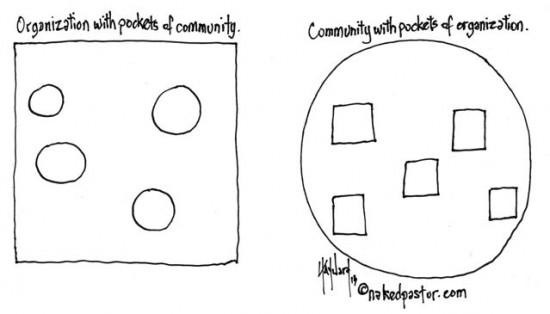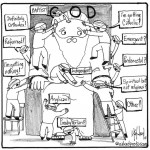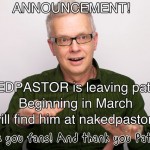I’ve always been passionate about community. Pastoring local churches over the years was a 30 year experiment on whether authentic community can be created and enjoyed. By the time I finished my ministry in 2010, I believe I had figured a lot of it out. I even wrote a book about it, Without a Vision My People Prosper, in which I argue that vision and goal-setting works against authentic community. The book is basically an assemblage of my blog posts on the topic. I really didn’t expect it to fly off the shelves because most pastors believe vision and goal-setting is an essential component of a successful church. And most of those who might agree with my hypotheses have left the church and no longer care. So my posts addressing the problem of vision in the church always initiated some heated debate, especially from pastors.
Now that I’ve launched my online community, The Lasting Supper (TLS), I am convinced even more that the things I learned about local community are valuable. The community of TLS resembles in many ways the last church I pastored where we as a congregation experimented with authentic community and succeeded. Now people are calling me to ask how to do community. Apparently I’m now recognized by some as an expert on building community. Who’d ‘a thunk it?
I drew the above illustration to explain the differences between community and organization. The one on the left, an organization with pockets of community, is how businesses, non-profits, and other organizations work that have a certain purpose. A company’s primary purpose is to make money. No matter how noble their publicly stated purpose is, such as populate the world with its products or services, the number one goal is to make money. When you work for that company, that is your job– to help the company succeed and make money. Of course, you can enjoy community within the organization, commonly known pejoratively as cliques, as long as they don’t threaten the company.
The one on the right, in my opinion, is the best model for church communities. That’s if you want community first. I compare it to a healthy family where there are no visions or goals and where they simply live and grow together in the same house. They live independent lives but contribute to the family dynamic when they live and gather together. This was my experience in the last church I pastored which truly acted this way. It was a community that behaved like a healthy family. There was occasional dysfunction but it always worked out. We had a phrase, “authenticity with accountability”, which means you are free to be you but you will be informed when you needlessly hurt someone. We were criticized as being a church where we just sat around “being” rather than “doing”. But that was not true. There was lots of activity because there were pockets of organization. If someone wanted to do something for the poor, or for a certain family in need, or for the children or youth, or for the building, or whatever, then a group of interested members could gather around the project, do it, then dissolve. It worked.
I claim the problem for churches is when they confuse the two models. Many pastors want community (the one on the right), but they want to pastor a successful church (the one on the left). You can’t do both! The confusion will confound and impede community. A church will either be one or the other. If you want to build a successful church, you have to abandon the idea of it being a community. You may have pockets of community within the organization, but the flavor of the church will be organizational. If you want to have a community, then you have to abandon your ambitions for a successful church. You will have pockets of organization, but these will be occasional and provisional and may not even contribute to the success of your church.
I will be writing more on this, but I thought this would be a good summary of my thoughts on community. I hope this helps.
I invite you to join my online community, The Lasting Supper.













